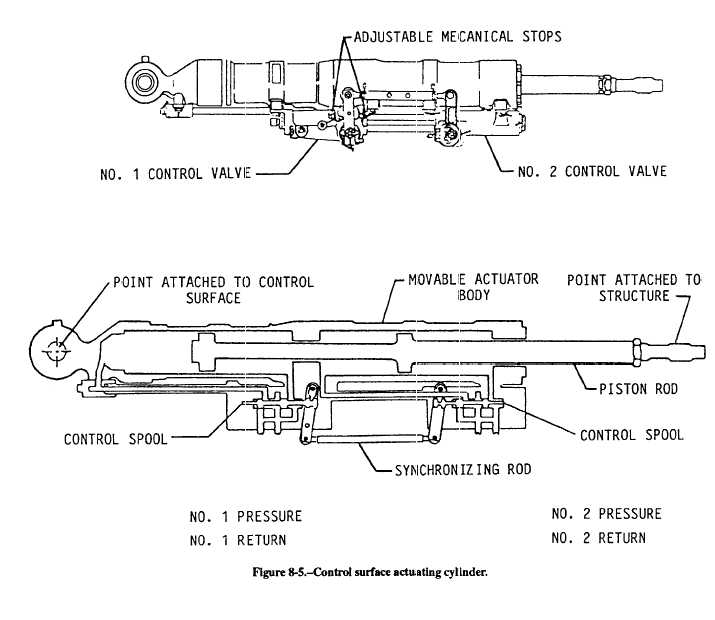

Custom Search
|
|
  |
|
|
HYDRAULIC MOTORS Hydraulic motors are used to convert hydraulic pressure into rotary mechanical motion. The type of hydraulic motor used in naval aircraft is similar in general design and construction to the piston-type pumps. The difference in the operation of a hydraulic motor and a hydraulic pump is as follows: In the operation of a pump, when the drive shaft is rotated, fluid is drawn into one port and forced out the other under pressure. This procedure is reversed in a hydraulic motor. By directing fluid already under pressure into one of the ports, pressure will force the shaft to rotate. Fluid will then pass out the other port, and back to return. The rotary mechanical force provided by the motor can be used to drive a gearbox, torque tube, or jackscrew.Hydraulic motors are commonly used cooperate the wing flaps and radar equipment. Hydraulic motors may be operated in either direction of rotation, with the rotation being controlled by the direction of flow to the valve plate ports. The direction of rotation may be instantly reversed without damaging the motor. The direction of flow is controlled by a selector valve.A typical hydraulic motor is shown in figure 8-6. This is a nine-cylinder, fixed-stroke motor. It is self-lubricating and requires no line maintenance other than periodic visual inspection for leakage. The motor is equipped with a stub tooth spline, suitable for engagement into the mechanical linkage of the unit to be actuated on the aircraft.Any shop maintenance that must be performed on a hydraulic motor should be done in accordance with instructions contained in the applicable Overhaul Instruction Manual (03 series).VALVES Learning Objective: Identify typical valves in a basic actuating system. A valve is defined as a device that provides control of the flow or pressure in a hydraulic system.
|
|
  |
|